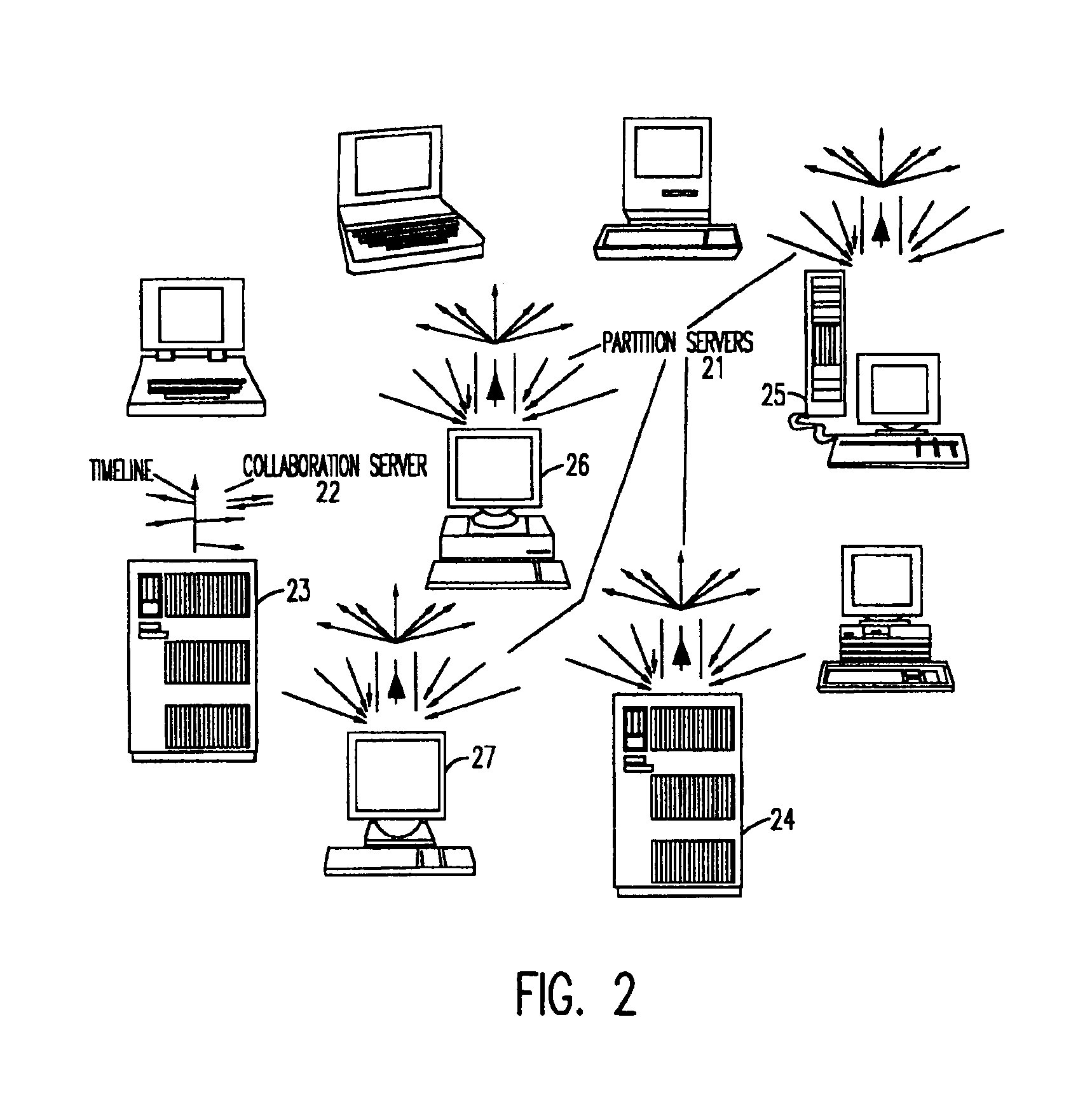Synchronous collaboration based on peer-to-peer communication
a technology of peer-to-peer communication and synchronous collaboration, which is applied in the direction of generating/distributing signals, data switching networks, instruments, etc., can solve the problems of unbalanced load in the interconnection network, severe load on the client's computing and communication requirements, and ineffective service of the interconnection network, so as to improve efficiency/scalability/throughput of real-time collaboration, improve interoperability, and improve efficiency and scalability. the effect of real-
- Summary
- Abstract
- Description
- Claims
- Application Information
AI Technical Summary
Benefits of technology
Problems solved by technology
Method used
Image
Examples
Embodiment Construction
[0028]Referring now to the drawings, and more particularly to FIG. 1, there is shown a simple centralized server 11 running on a host hardware system 10. The server is comprised of a First In, First Out (FIFO) queue structure in which modifications coming from various clients are entered. These clients are collaboration software front-end which interact with collaboration participants. The clients may be running on desk top computers, such as computer 12, laptop computers, such as computer 13, network computers, such as computer 14, or work stations, such as computer 15. A client sends modifications to the server on a channel that is itself a FIFO structure. The server 11 picks a modification from one of the outputs of channels coming from clients and enters it into its FIFO queue. The order in which modifications get entered in the server's queue forms the order of serialization of the modifications. The output of the server's FIFO queue is broadcast to all clients over channels th...
PUM
 Login to View More
Login to View More Abstract
Description
Claims
Application Information
 Login to View More
Login to View More - R&D
- Intellectual Property
- Life Sciences
- Materials
- Tech Scout
- Unparalleled Data Quality
- Higher Quality Content
- 60% Fewer Hallucinations
Browse by: Latest US Patents, China's latest patents, Technical Efficacy Thesaurus, Application Domain, Technology Topic, Popular Technical Reports.
© 2025 PatSnap. All rights reserved.Legal|Privacy policy|Modern Slavery Act Transparency Statement|Sitemap|About US| Contact US: help@patsnap.com



